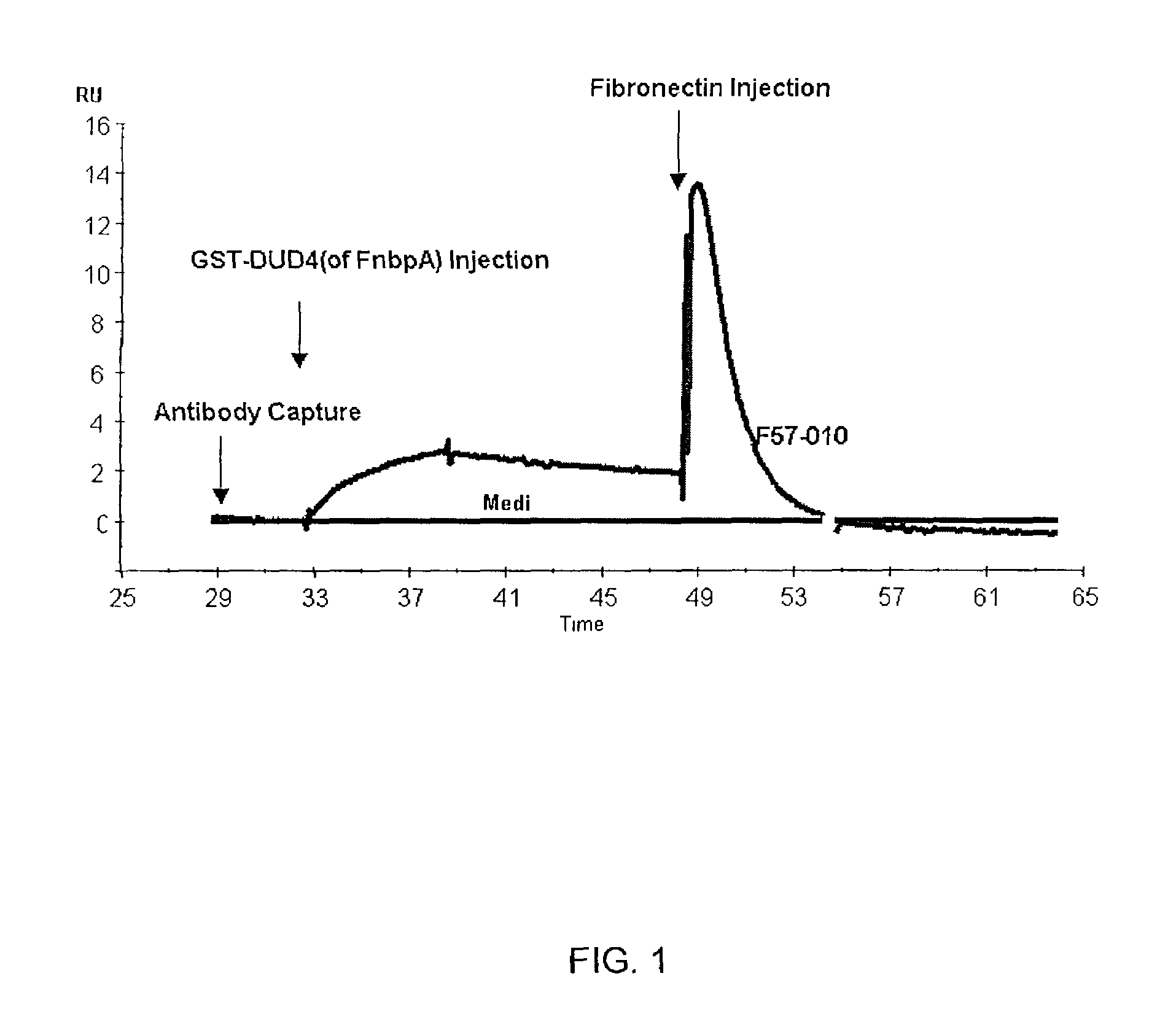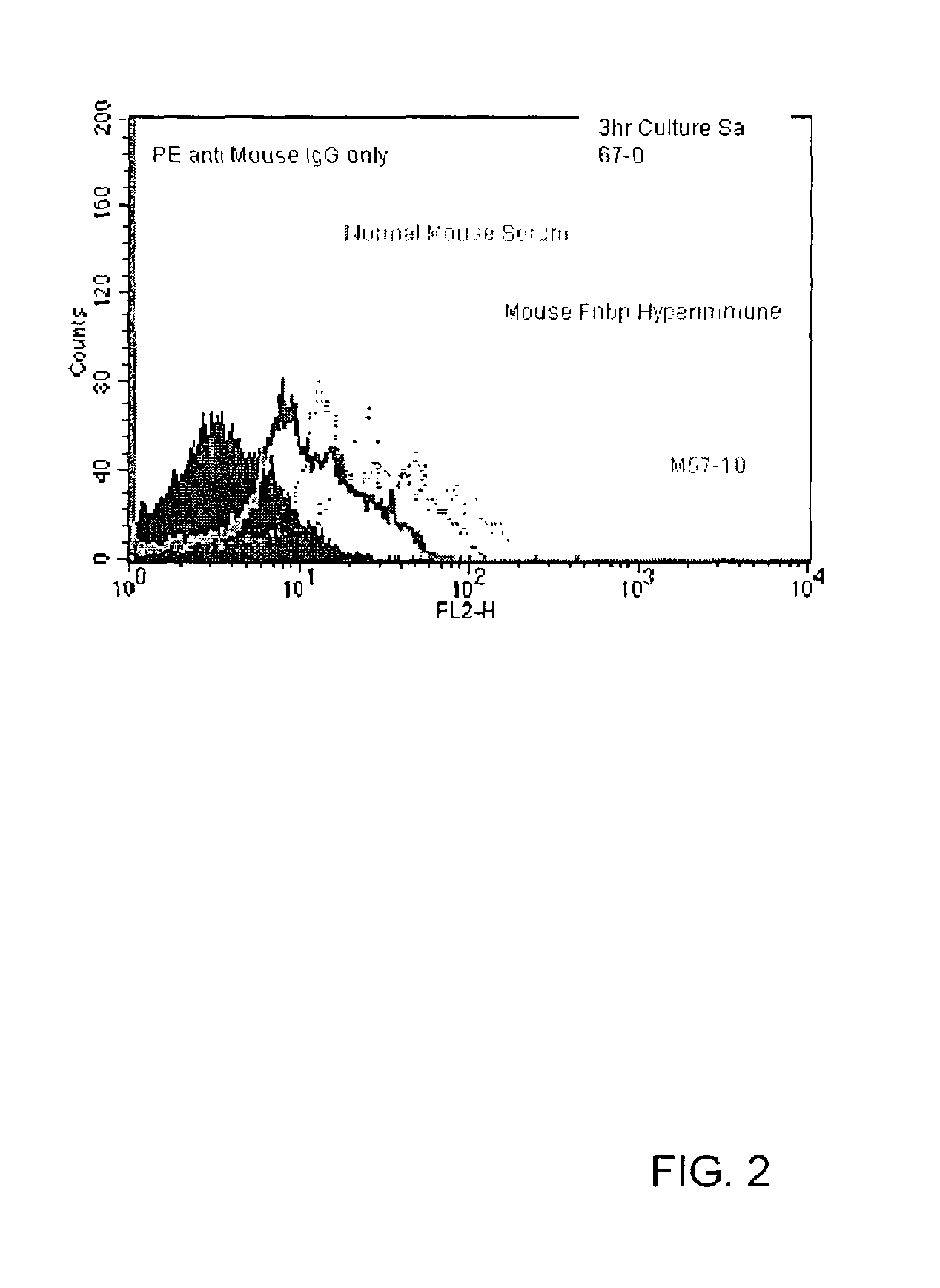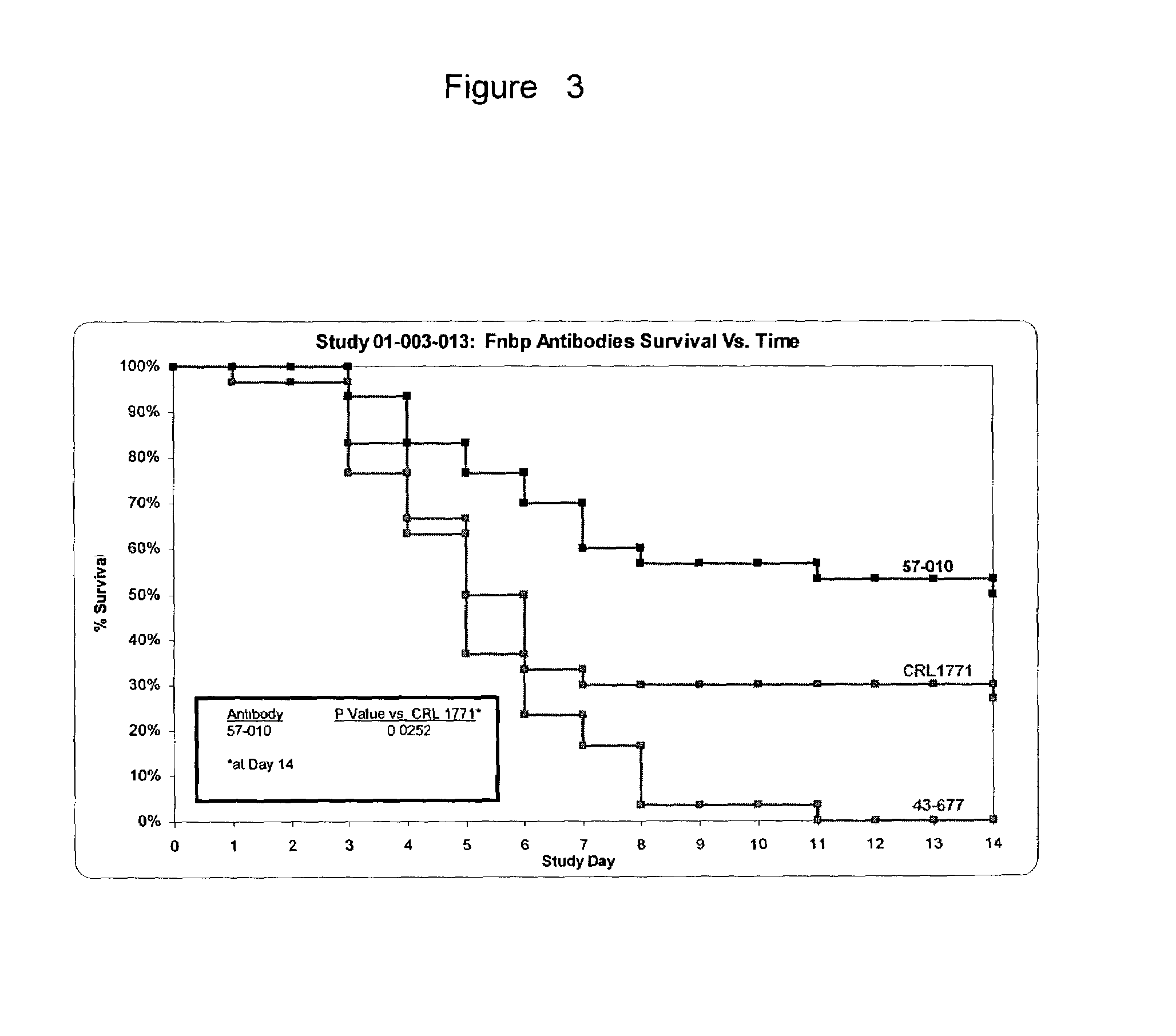Monoclonal antibodies to the fibronectin binding protein and method of use in treating or preventing infections
a technology of fibronectin and binding protein, which is applied in the direction of antibodies, medical ingredients, peptides, etc., can solve the problem of incomplete understanding of the sophia interplay between host and bacterium
- Summary
- Abstract
- Description
- Claims
- Application Information
AI Technical Summary
Benefits of technology
Problems solved by technology
Method used
Image
Examples
example 1
Preparation of Monoclonal Antibodies to the D2 Peptide
[0047]This example describes the discovery, production and characterization of a monoclonal antibody against the fibronectin binding proteins FnbpA and FnbpB, surface localized proteins that are expressed by virtually every S. aureus strain. Data presented here clearly demonstrate that monoclonal antibodies against a D2 peptide of FnbpB binds S. aureus with high affinity.
[0048]Using a peptide synthesizer, a peptide encoding the first 30 amino acids of the D2 region (GQNNGNQSFEEDTEKDKPKYEQGGNIIDID) (SEQ ID NO:1) was synthesized containing a cysteine at the N-terminus (C-GQNNGNQSFEEDTEKDKPKYEQGGNIIDID) (SEQ ID NO:2). For Immunization purposes, this peptide was conjugated to ovalbumin via the N-terminal cysteine.
Monoclonal Antibody Production
[0049]The D2 peptide described above was used to generate a panel of murine monoclonal antibodies as described by Kilpatrick, et al. (Rapid development of affinity matured monoclonal antibodies ...
example 2
Use of the Biacore to Select High Affinity Mabs that Block DUD4 Binding to Fibronectin and Bind to Staphylococcus aureus
[0055]A Biacore analysis to measure DUD4-GST binding and subsequent binding / inhibition of fibronectin when Mab F57-10 or Media are bound to the chip was performed using rabbit anti-mouse Fc (RAM-Fc) antibody. The results are shown in FIG. 1. In addition, a flow cytometric analysis of F57-10 binding to Staphylococcus aureus strain 67-0 was conducted, and the results are shown in FIG. 2.
[0056]The results represented in FIGS. 1 and 2 with F57-10 demonstrate that a monoclonal antibody with high affinity and selectivity can be generated using the D2 peptide as an immunogen. Accordingly, the monoclonal antibodies of the present invention can be used to prevent binding of S. aureus Fnbp to fibronectin, and can thus be useful in methods of treating or preventing S. aureus infections.
example 3
Protective Activity of the Anti-D2 Monoclonal Antibody in a Murine Model of Sepsis
[0057]The purpose of this example is to characterize the protective effects of the D2 monoclonal antibody, 57-010 compared with the isotype-matched control CRL1771 antibody and FnbpA monoclonal antibody 43-677 using a 0.8 mg dose of antibody and S. aureus strain 67-0 in a mouse sepsis model.
Sepsis Model Design
[0058]
SpeciesStrainSexNumberAge*Weight*SourceMiceBalb / CFemale904–5 weeks12–16Taconic Farms, Inc.grams(Germantown, NY)*Estimated range at initiation of study.
[0059]Dosing was performed by the administration of an intraperitoneal (i.p.) injection of monoclonal antibody to the appropriate animals (see below). Administration of the antibody was performed approximately 18 hours prior to the intravenous (i.v.) injection of S. aureus. Systemic infection was measured using a single parameter (mortality).
[0060]
TREATMENTCHALLENGEGroupNo. ofTimeVolume / #MiceAntibodyDoseRouteFrequencyPoint*BacteriaCFURoute1305...
PUM
| Property | Measurement | Unit |
|---|---|---|
| time | aaaaa | aaaaa |
| flow rate | aaaaa | aaaaa |
| concentration | aaaaa | aaaaa |
Abstract
Description
Claims
Application Information
 Login to View More
Login to View More - R&D
- Intellectual Property
- Life Sciences
- Materials
- Tech Scout
- Unparalleled Data Quality
- Higher Quality Content
- 60% Fewer Hallucinations
Browse by: Latest US Patents, China's latest patents, Technical Efficacy Thesaurus, Application Domain, Technology Topic, Popular Technical Reports.
© 2025 PatSnap. All rights reserved.Legal|Privacy policy|Modern Slavery Act Transparency Statement|Sitemap|About US| Contact US: help@patsnap.com



